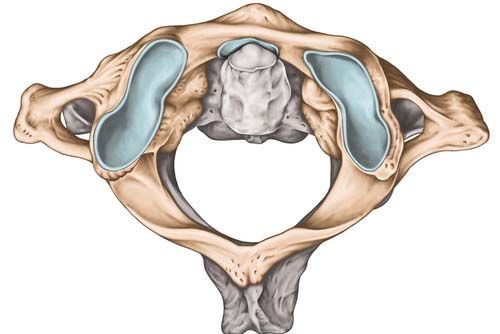We are licensed and trained chiropractors, so when people find out I’m a chiropractor, usually their first thing is, “Hey, I got back pain. Can you crack my back?” And I say, “No, because I do something a little bit different. I focus on the upper cervical spine.” Now, why do I do that?
Research shows us that a subluxation, or a misalignment in one of the top two bones in the neck putting pressure on the brainstem, can cause a variety of conditions. If I can take care of that subluxation, or that misalignment at the top two bones, then the body can take care of itself. Let me explain to you how this happens.
An upper cervical misalignment, or subluxation, which is pressure on the brainstem, happens due to a trauma at some point in someone’s life. This trauma could have been all the way back at birth. It could have been a slip and fall as a kid. It could have been a sports injury or a car accident… We don’t know until we take X-rays. However, when this misalignment happens, two things occur.
Number one, like we already talked about, it puts pressure on the brainstem. It is important to note that the brain, the brainstem, and the spinal cord the rest of the way down, have no pain perception. What that means is you could have had a misalignment here for years, even decades, even since the day you were born, and never have any headaches or neck pain. However, if this subluxation occurs, it is interfering with the messages from your brain to the rest of your body. These are the messages that go to your stomach, heart, lungs, kidneys, liver, etc. Every single cell, organ, and tissue has these messages from the brain and brainstem.
We like to call the brainstem “Houston Control.” It’s like our relay center. Every single message from the brain to the body has to go through the brainstem, and even messages from the brain to the brain itself always relay through the brainstem. This is why we see awesome results with things like anxiety, depression, panic disorders, and even learning disorders. We see things clear up like Crohn’s disease, constipation, diarrhea, or issues with the gastrointestinal tract. We’ve seen kidney failure get better. We’ve seen your typical neck and back pain, migraines, headaches… Really any condition you can think of, it’s worth it to see if an upper cervical issue could be causing that condition.
We’ve talked about brainstem pressure. The second thing that can happen is, structurally, your head sits on top of the first bone in your neck, or the atlas. When a misalignment at atlas occurs, maybe decades ago, taking this bone outside of its normal physiological space, meaning it’s not where it is supposed to be, it takes the head with it. The brain has its own reflex, called the righting reflex, which forces the brain to always be level. When this misalignment occurs, taking the head with it, obviously taking the brain, too, now the brain is not level. The brain does not like this. It sends messages down the spine, forcing a chain reaction of twisting and turning, bending, and rotating – whatever the spine has got to do to get the head level.
What that looks like overtime is compensations throughout the spine. This is why we see weaknesses in the spine, and these weaknesses basically turn into pain. This could be neck pain, upper back pain, low back pain, all the way down to hip, knee, and foot pain. All due to that atlas bone being misaligned, forcing weaknesses throughout the spine.
We can work on those weaknesses all we want, but the body put them there for a reason. They’re literally compensatory to the misalignment at the top, which is why we don’t want to touch the rest of the spine. We only want to touch the top two bones in the neck because that is the cause of the pain that’s going on, or even the pressure on the brain stem causing a variety of systemic issues throughout your body.

